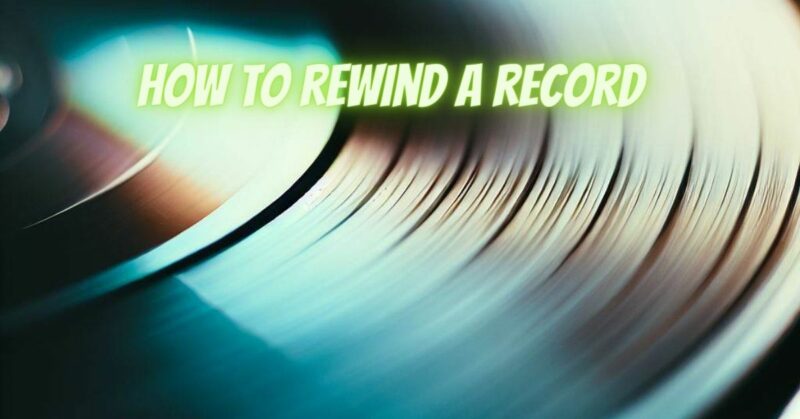While vinyl records are primarily played in a forward direction, there may be instances when you need to rewind a record to replay a specific track or section. Unlike tapes or digital media, vinyl records do not have a dedicated rewind function. However, with the right techniques and precautions, you can safely and effectively navigate backward on a record. In this article, we will guide you through the steps to rewind a vinyl record properly.
- Understand the Limitations: Unlike tapes or digital media, rewinding a vinyl record involves manually moving the tonearm back to a previous section. It’s important to note that rewinding a record can put stress on the stylus and may cause unnecessary wear to the grooves. Therefore, it’s recommended to use the rewind option sparingly and only when necessary.
- Lift the Stylus: Before attempting to rewind, lift the stylus carefully using the cueing lever or tonearm lift on your turntable. This ensures that the stylus does not come into contact with the record surface during the rewinding process, minimizing the risk of damage.
- Slide the Tonearm: With the stylus lifted, gently slide the tonearm backward to the desired starting point. Take care to avoid sudden movements or excessive force that could harm the tonearm or the record grooves. Move the tonearm smoothly and steadily, maintaining control throughout the process.
- Engage the Stylus: Once the tonearm is positioned at the desired starting point, carefully lower the stylus onto the record surface using the cueing lever or tonearm lift. Ensure a gentle and controlled descent to prevent skipping or scratching.
- Monitor Playback: As the record begins to play from the rewound position, monitor the playback closely. Verify that the stylus is tracking properly and that there are no issues with sound quality or skipping. If any problems occur, stop the playback immediately and reassess the position of the stylus and tonearm.
Important Considerations:
- Rewinding a vinyl record should be done infrequently and with caution to avoid unnecessary wear on the stylus and potential damage to the grooves.
- It’s recommended to listen to a record in its intended sequence to maintain the integrity of the album and minimize the need for rewinding.
- Keep in mind that repeatedly rewinding a record can cause cumulative wear and tear on the grooves, affecting sound quality over time. Consider using alternative methods, such as digital media or track-skipping turntables, for frequent rewinding needs.
Conclusion:
While vinyl records are not designed for frequent rewinding, it is possible to navigate backward on a record with careful handling and attention to detail. By following the steps outlined in this guide, including lifting the stylus, sliding the tonearm, and engaging the stylus at the desired starting point, you can safely rewind a vinyl record when necessary. Remember to use this technique sparingly to minimize wear and preserve the overall quality of your record collection.

